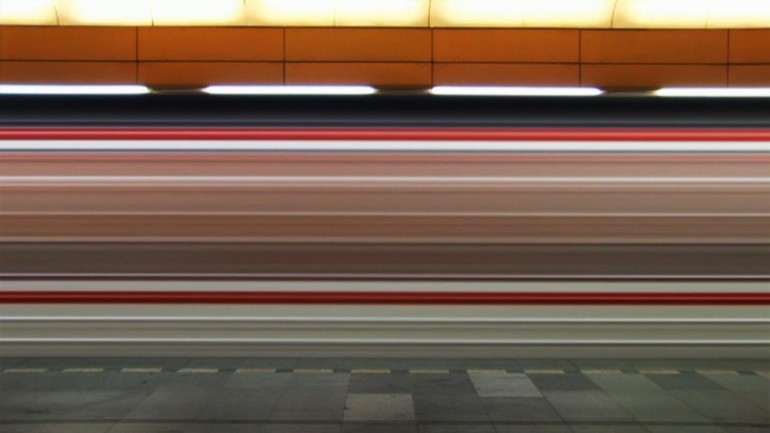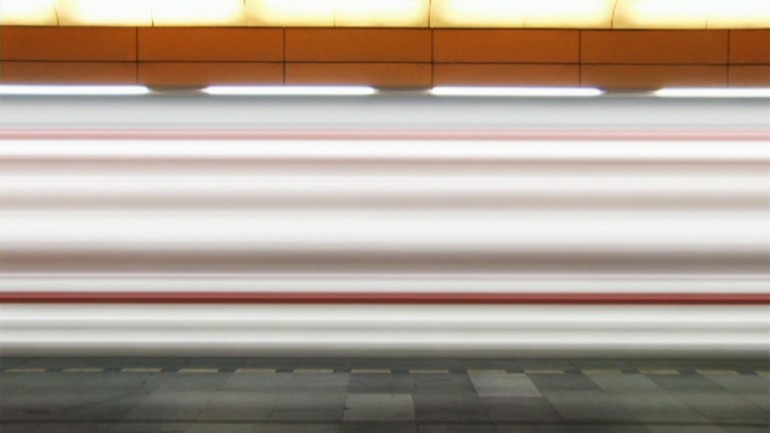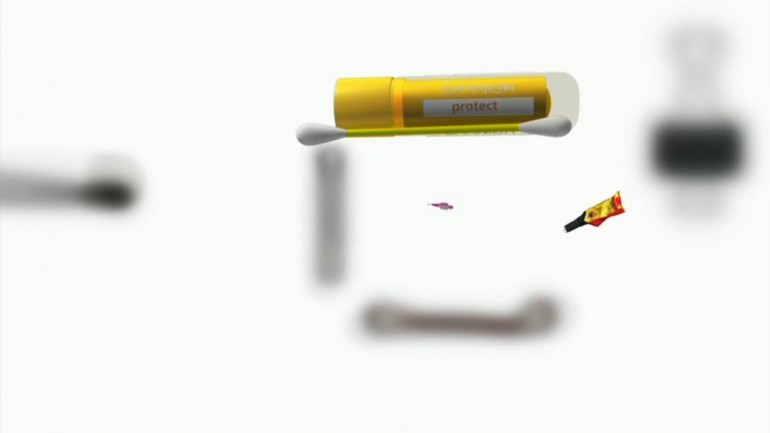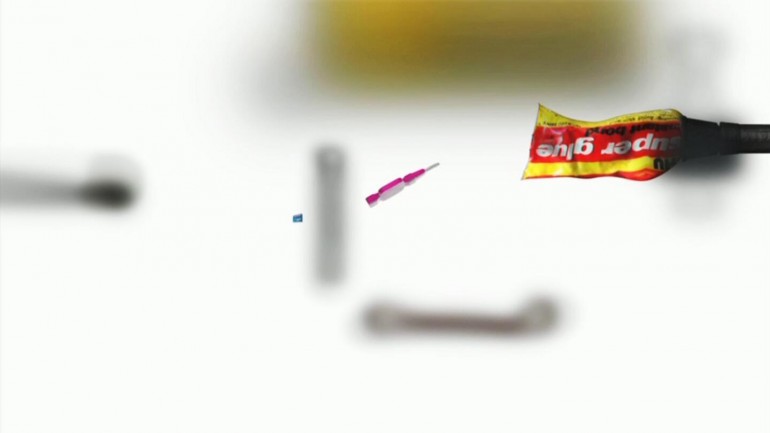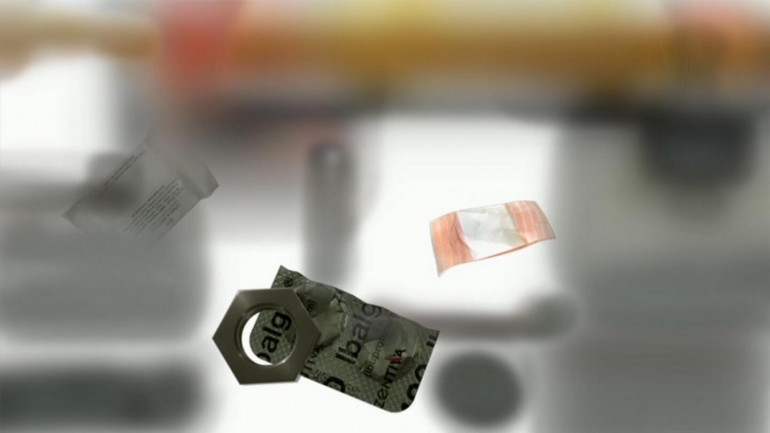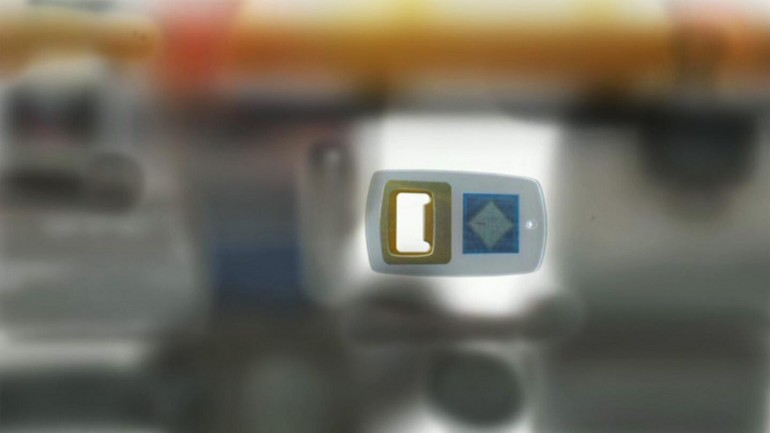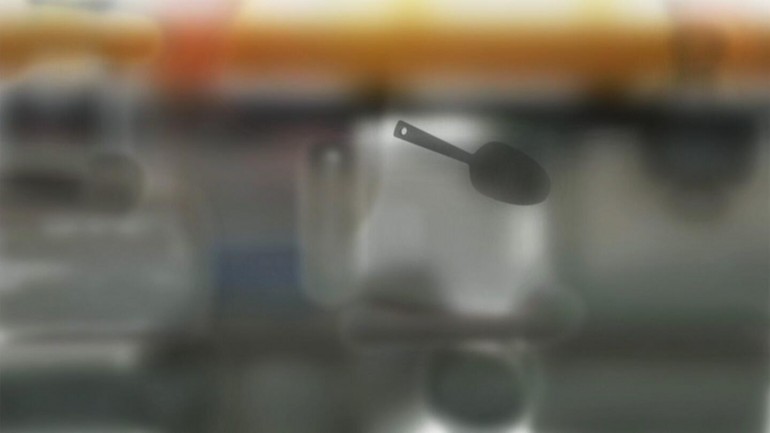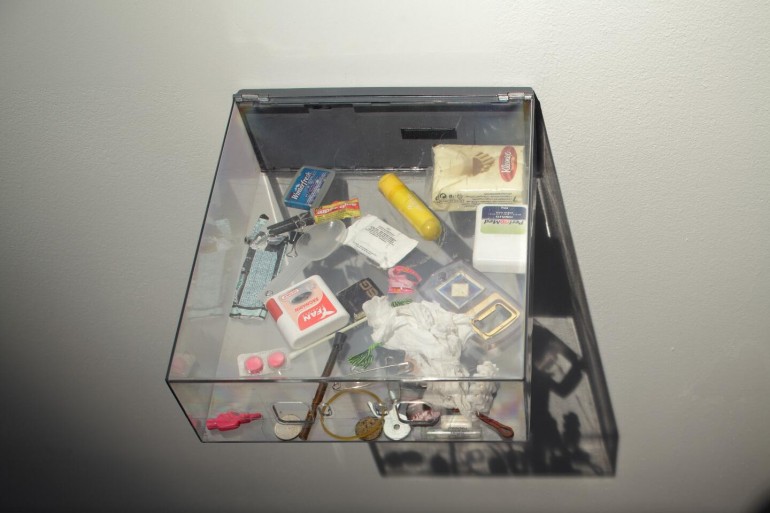My project attempts to apply two apparently incongruous entities – a “social event”, i.e. something not precisely definable, and something that attempts a precise definition of the world – the application of “physical laws.” More precisely put, it is a matter of an artistic adaptation of an everyday social phenomenon into a physical, “laboratory” process (which takes place within a particle accelerator).
The film is preceded by a poll, which is conducted on the platform of the underground railway just before people board the train. I address the future passengers and ask them to give me something that they have on them at that moment and that they wouldn’t miss, i.e. to give without regret (hence the title of the film). The intention is to acquire things that people attach no essential value to, so that they are willing to surrender them for someone else’s benefit without regret. And it is these very things that will have a fundamental significance for the intention of the experiment.
The action of the 20 minute film develops thus.
The camera films the platform so that the train will be perpendicular to the direction of the camera. Commuters waiting for the train walk along or stand on the platform at will. After a while the train comes. People board the wagons and the train starts moving. The wagons accelerate and the viewer gradually realises that the train is unnaturally long and fast. As the seconds add up, the speed continues to increase and it may occur to some viewers that the train seems to be endless, or perhaps that it is travelling in a circle at enormous speed. After a while, the speed increases as far as the sound barrier. Then the image calms down overall. All the details on the surface of the train cease to blur. Even the undulations caused by the irregularity of the track cease. The sound and image become more fluid and quieter. The train now has a very abstract appearance. Some of its details begin to glow. The light is more and more intense as the train approaches the speed of light. At the moment it reaches this speed, the entire train glows. The speed at this moment is the maximum, and yet the overall image is quiet to the point of contemplative. After a while it is apparent that the speed of light of the train is exerting gravity on its surroundings. On the one hand the light illuminates the space more and more, and on the other the gravity of the train begins to distort and absorb it. This has the effect that the image gradually whites out until it quite disappears. Before this happens, the perfect whiteness of the image is disrupted by a flaw, and here we get to the second half of the film.
If the first half was concerned with speed, analysis, atomisation and abstraction, then the second begins with abstraction. It culminates in an image of concrete reality. In the ultimate dynamic is contained a different “metaphysical” timeframe, which is a sort of inner movement of speed. It is a parallel, very slow movement of synthesis. It is as if you were to fly in a rocket, while inside you slow digestion was occurring. Everything that was divided by speed now begins to merge freely. At first only the flaw is seen, then a point that continues approaching and takes on a concrete form. It can gradually be recognised as a moving, three-dimensional object. It looks as if it has elevated and rotated inertially in empty space. When it comes close enough to be recognised, we realise that it is a safety-pin. You only have a few seconds for this, though, because the object moves out of the focal point of the camera and continues moving towards the lens out of focus. It then collides with the lens and clings to it in such a way that it completely obscures part of the image. During the following fifteen minutes, all the other objects that I have acquired from the commuters accumulate in this way on the lens. Some of them collide with each other during flight and link together. Because each of them is generated from the beginning into a fragment of the final image that is absolutely identical to the initial one, an amalgamation of the future and the present occurs and the film begins to cycle. The whole action is then repeated in subsequent loops.
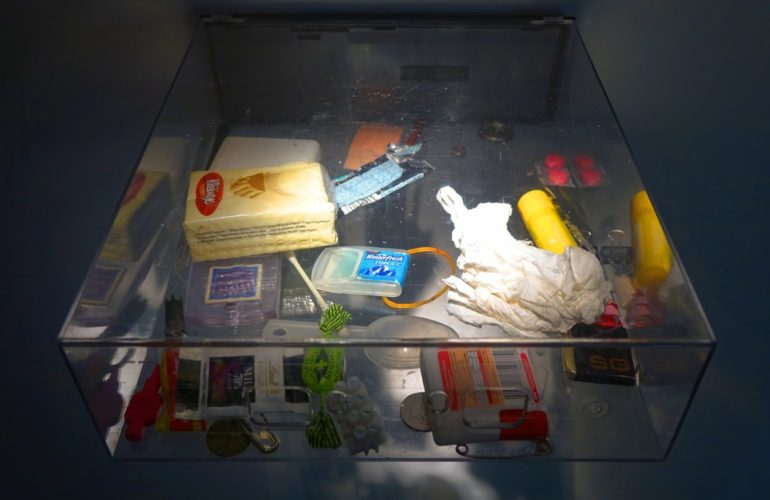
Real objects used in film: “Would you please give me something you wouldn’t regret?”
